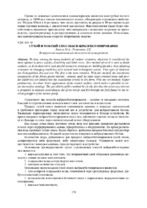| dc.identifier.citation | Кисель, М. А. Сухой и мокрый способы набрызгбетонирования / М. А. Кисель, Д. Е. Ложников // Новые горизонты - 2019 : сборник материалов Белорусско-Китайского молодежного инновационного форума, Минск, 12–13 ноября 2019 г. / Белорусский национальный технический университет. – Минск : БНТУ, 2019. – С. 170-171. | ru |
| dc.description.abstract | To date, among the many methods of surface treatment, shotcrete is considered the most optimal in price, quality, durability and labor costs. This method of work is used to finish surfaces, to form decorative and special protective coatings on building facades, thus adapting structures to changing conditions of a natural and technogenic nature. Two types of shotcrete are distinguished, dry and wet. The first is the most common. With this method, the constituent components of the future gunite mixture - cement, sand (in some cases crushed stone and powder additives) are loaded into the installation strictly in dry form. With the wet method, higher productivity, less dust, better appearance of the treated surface, which makes it possible to create decorative coatings. The peculiarity of this method lies in the fact that the necessary mixture is prepared in advance according to the given recipe and fed through the feed funnel to the receiving hopper of the mortar pump. | ru |

